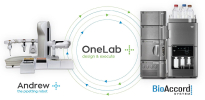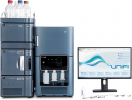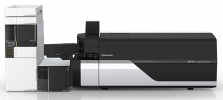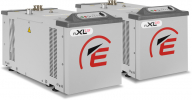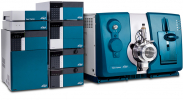Agilent Technologies has announced the 6490 Triple Quadrupole LC/MS System with iFunnel technology. iFunnel technology revolutionises the process of atmospheric pressure ion sampling, driving large sensitivity gains for most applications. The new system has a 25% smaller footprint than previous models, with a sensitivity specification that is 10 times higher.
iFunnel technology relies on Agilent Jet Stream technology thermal gradient focusing to create a high abundance of accessible gas phase ions. These ions are then drawn into the mass spectrometer through a Hexabore Capillary sampling array, six parallel capillaries that accept nearly 12 times more ion-rich atmospheric gas than previous systems. The ions are focused and separated from the gas by a Dual Ion Funnel assembly. The first high-pressure funnel removes most of the gas and focuses the ions into the second low-pressure funnel, which removes the remainder of the gas so that the ions can enter the Q1 optics.
“Triple quads are considered mature technology, yet we have been able to consistently improve their performance with a succession of product introductions over the past four years,” said John Fjeldsted, general manager of Agilent’s LC/MS business. “It is not very often that you can take a huge step forward as we are this year with the iFunnel technology. It establishes a whole new paradigm for atmospheric ion sampling.”
In addition to iFunnel technology, the instrument also has a new curved, tapered collision cell. This device allows a compact system design and reduces noise to help improve overall sensitivity.
The 6490 ushers in a new frontier of application possibilities with the ability to detect molecules at the zeptomole (10–21 mole) level—a level of sensitivity that has only been realised by expensive accelerator mass spectrometry systems in the past. The iFunnel technology also enables an unprecedented linear dynamic range that extends to six orders of magnitude for many compounds.
This level of sensitivity is particularly useful for environmental applications where parts-per-trillion sensitivity often is required. Other high-sensitivity applications include the pharmaceutical arena with needs such as microdosing, detection of inhaled drugs and dried blood spot analysis. Routine access to such high sensitivity creates new opportunities for clinical, food safety and protein/peptide quantification, and improves general assay robustness and/or streamline sample preparation.


